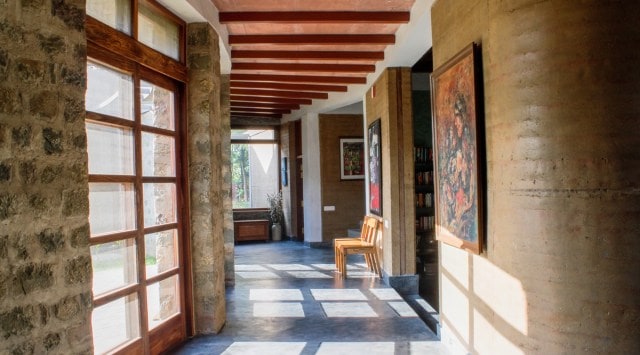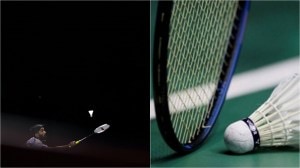Earth to Earth: Experience life in Chandigarh’s first rammed earth farmhouse, on Panchkula outskirts
The house is a repository of sustainable building practices and materials, and all its various parts are tied together visually and structurally by an upper beam that also serves to make the home earthquake-resistant.
 At Aanandaa Permaculture Farm near Bunga on the outskirts of Panchkula, Manisha Lath Gupta was certain that she did not want to use concrete for her home.
At Aanandaa Permaculture Farm near Bunga on the outskirts of Panchkula, Manisha Lath Gupta was certain that she did not want to use concrete for her home. The Chandigarh tricity region’s aesthetic is about burnt brick and concrete. So a house built with mud appears like a peculiarity. Considering the climate crisis, the way forward is to use locally available, low-impact materials for construction. And what is better than earth from one’s own site?
At Chandigarh’s first rammed-earth farmhouse on the outskirts of Panchkula, Manisha Lath Gupta was certain that she did not want to use concrete for her home. That is where Jitesh Malik, who runs an architecture practice in Panchkula called Studio Aureole, stepped in. Malik is trained as an architect, artist and a landscape architect. With a hands-on way of working, Malik thrives on experimenting with materials. He is committed to integrating the indoors and outdoors in artistic ways and that is exactly what he did at the farmhouse.
Manisha wanted a home that was sustainable, energy-efficient, aesthetic and comfortable. Malik worked closely with Manisha to give shape and form to a shared aspiration.
Malik’s experience in Auroville, Tamil Nadu, where he has spent a long time, helped as he brought with him a wealth of expertise about earth architecture. Earth construction, says Malik, has stood the test of time and is increasingly being sought after by all those who want to live in harmony with nature. “Versatile and viable, this humble material allows for extraordinary diversity in the way it can be used. Earth enables sustainable living with breathable walls and the ability to regulate temperature, humidity, and noise naturally. We chose rammed earth for this project because it has the flexibility of concrete, is cohesive, which lessens the chances of cracks, and provides high heat capacity,” explains Malik.
 (Express Photo)
(Express Photo)
The house uses mitti from around the site and they did what is called a jar test to see if the earth is suitable in terms of its composition — that is if it has the right balance of clay, sand and silt. Another challenge was that none of the masons in the region had experience in rammed earth construction. So Murugan, a mason, and Ashumi, an architect who had experience working with rammed earth in Kerala, guided the construction team through different techniques, tools and certain intricacies of the process. The team at Studio Aureole adapted the process by replacing cement as a stabiliser with locally sourced lime to great success.
The architecture is a solid experiment in multiple processes, each using low-impact materials. It has shallow brick domes, also called Rohtak domes, in the living room and bedrooms. There is a madras tile roof over the family den, a wooden roof over the dining hall, and earthen pots embedded in the kitchen roof. While most walls are made using rammed earth, the house also has stone gabion walls. The house is a repository of sustainable building practices and materials, and all its various parts are tied together visually and structurally by an upper beam that also serves to make the home earthquake-resistant. Malik designed and experimented with different shuttering techniques in collaboration with local carpenters particularly as the house design had straight, continuous and curved walls. There is also a wall that embeds empty glass bottles in it, creating a beautiful texture and subtle filtering of light into the space.
The home is designed on five-acre farmland and faces a seasonal pond. Malik has skillfully integrated the built spaces with the landscapes outdoors, creating enclosed outdoor spaces, small gardens and outdoor seating—all the while ensuring natural light and excellent ventilation into the built rooms.
“Sustainability for me is not just about the material; it is not a mental idea. It is not complete unless there is a deep connection, unless you are connecting a place deeply to a practice. It is not about changing the world; it is more about changing oneself. It is about really looking at the context—of people, of who we are and of how we are impacting our environment,” sums up Malik.












